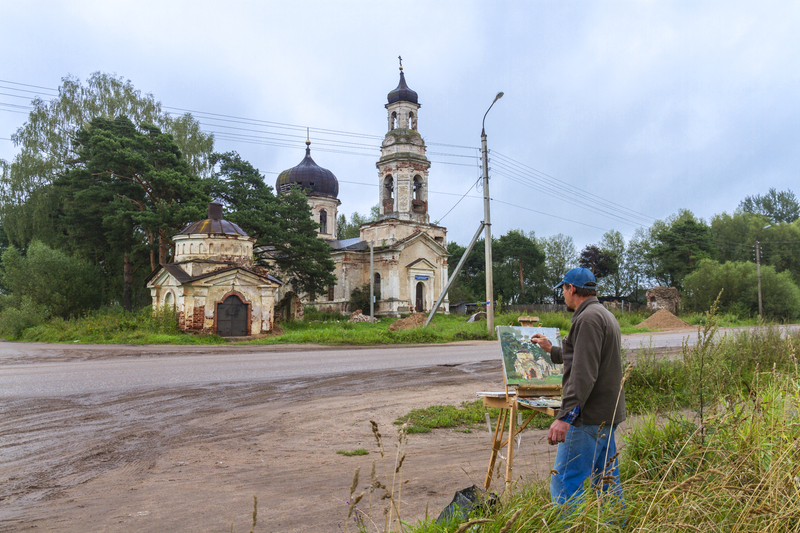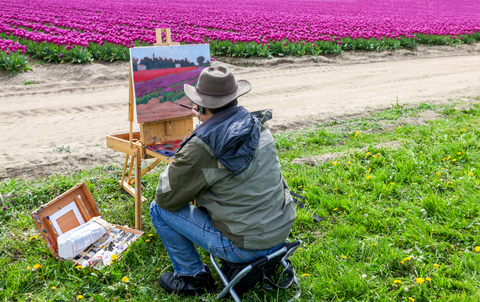What Is Plein Air Painting?
The term “Plein air” was used to describe Claude Monet and the Impressionists in France. In French it means “open-air” or “outside,” but since Monet’s time, the term has been used to describe people who take their easels outdoors to paint. Plein air painting is for people who love to be outdoors in nature, people who love to paint landscapes (as well as other outdoor subjects like buildings, cities, old barns, farm equipment, statues, flowers, gardens, and people). Painting outdoors offers artists the pleasure of being in nature, and the ability to “stop and smell the roses” because of the need to concentrate on a single scene until the painting is completed. Many artists carry a portable easel in their cars or when they travel so they can stop and paint a scene that inspires them.
Unlike artists who paint in the studio, many believe painting outdoors allows the artist to better represent the true colors of a scene, the true form of shapes, and the feel of a scene. Studio painters often use photographic references, which tend to darken some colors and brighten others. Plein air painting is catching on, and a huge movement of painters look at it as “the new golf” because it’s a wonderful hobby or form of recreation that taps their creative side, gives them a wonderful experience outdoors, allows them to travel to beautiful places around the world to paint, and is something they can do with others. It is very social; artists no longer have to be cooped up alone in a studio.
People often consider Plein air a style of painting that involves loose brushstrokes and less detail, but there are many plein air painters who paint detail on location, and there are many styles of painting among those who paint outdoors.



